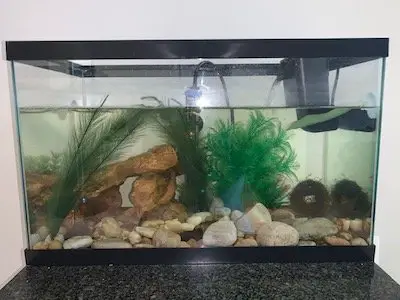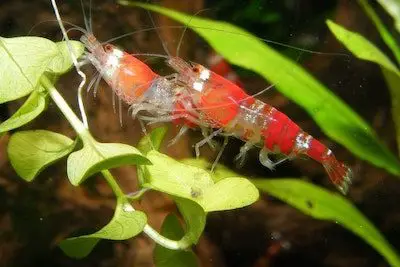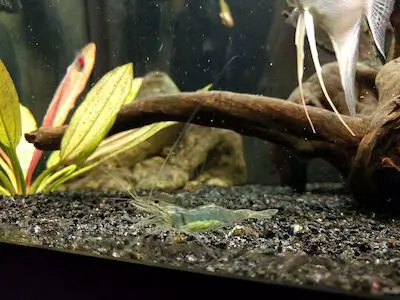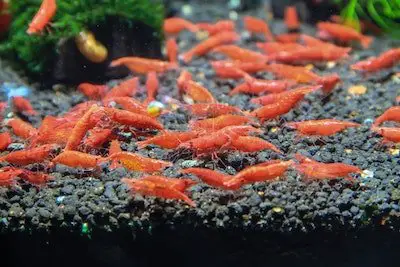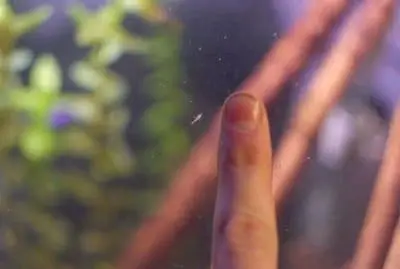Help! My Shrimp Aren’t Breeding!
Keeping shrimp as pets is a popular pastime for many people, but there’s a science to a successful shrimp breeding process.
Many factors play a role in shrimp reproducing successfully, so several problems can result in shrimp not breeding such as water salinity, food issues, and among others.
If you’re looking into breeding your shrimp, you’ve come to the right place. Below, you can find reasons why no offspring are being produced. Read on for the details.
Contents
Do Shrimp Breed Easily?
It’ll depend on the species, but all shrimp can breed under the right conditions.
You’ll need to provide a clean and safe environment that meets their preferences. With everything in place, all you need to do is wait.
Once the shrimp start reproducing, you’ll have a larger colony, sometimes more than you can handle.
No matter the species, it’s generally accepted that the breeding process takes a long time.
Expect to wait from three to five months, maybe even more.
Therefore, the answer is a yes for the most part. However, it can just be a lengthy process.
Why Are My Shrimp Not Breeding?
These aquatic creatures are very picky about their conditions, so you may find them refusing to reproduce due to one or more of these reasons.
Fortunately, most of these problems aren’t challenging to address.
Not Enough Shrimp in the Aquarium
In this case, I’m referring to your aquarium’s size more than the number of shrimp you have.
If a tank is too large, the male shrimp might not be able to locate a female. This is because the females release a hormone when the time is right (right after molting).
Without a smaller area or enough females, the males won’t be able to detect them or tell if they’re ready for reproduction.
Therefore, the chances of them breeding will drop significantly.
The solution is to transfer them to a smaller tank or introduce more females to the colony.
Water Salinity
Some shrimp species can breed in freshwater without too much prompting, but others can’t do that.
For example, species like Amano shrimp and some ghost shrimp need brackish or saltwater to ensure their larvae survive. When they mature, they’ll then live in freshwater.
If you have these species, you should introduce them to saltier water.
- Fan shrimp
- Bamboo shrimp
- Wood shrimp
- Vampire shrimp
These are all freshwater species, but their offspring must grow in saltwater, or they’ll die.
Other Aquatic Creatures
Those who wish to breed shrimp should clear their tanks of any predatory fish or aquatic animals, as they may develop a taste for shrimp larvae.
If you still want these fish around, the only way to give their larvae a chance is to let them hide in suitable spots inside the tank.
Nevertheless, the best course of action is to have a dedicated tank free of other species. Then, you won’t have to worry about losing them to predators.
Food Issues
Shrimp need to eat more to breed, but there’s more to it than the amount.
Feeding them too much will only cause water pollution. Too little, and they won’t reproduce either.
A balanced amount will prevent both of these problems from occurring.
Shrimp food should be nutritious and provide a wide range of essential nutrients.
Some breeders even make their own food that’s richer than commercial pellets. These foods usually have vegetables along with other ingredients.
Amino acids, minerals, and vitamins should all be part of your shrimp’s diet.
Water Chemistry Issues
These animals are highly attuned to the water they live in, meaning the slightest changes can throw shrimp off.
Therefore, it’s not recommended to change the water very frequently. However, even if your water is slightly hard, the shrimp can thrive and breed.
You can also give them some live water plants, but take care not to place too many within the tank at once.
The shrimp can handle some water changes, but immediate drastic switches in pH and hardness can harm them.
To prevent this, make sure you preserve an optimum water chemistry state.
Lack of Hiding Spots
Even in the wild, shrimp know that the best place to lay their eggs is somewhere predators can’t reach.
If your aquarium doesn’t have enough hiding spots, they won’t breed. They need a sense of security before that’s possible.
Owners can exercise their creativity and resourcefulness to fulfill their shrimp’s needs.
For example, you can throw some plants and wood into the tank or build them a shelter out of containers.
Temperature
As cold-blooded creatures, shrimp need heat to survive and reproduce. They can live in a wide range of temperatures, but they die faster if it’s too hot.
So you should keep the tank close to room temperature, but it also depends on the type of shrimp you keep.
With just the right amount of heat, shrimp will live longer and be more likely to reproduce.
Culling Shrimp Indiscriminately
It would be best if you didn’t cull your shrimp based on color alone since the males tend to be less colorful for some species.
However, if you do that, you could end up with only females, and breeding them will be impossible.
How Do You Encourage Shrimps to Breed?
The best way to encourage shrimps to breed is to pamper them and address their needs.
If you notice the water’s pH levels are wrong, try to correct that. However, take care not to introduce any drastic changes.
Feed the shrimp with high-quality food and provide shelter. With these issues addressed, your shrimp will be more inclined to reproduce.
It’ll take time, but following the advice above will increase their chances of breeding.
In Summary
Shrimp that are not breeding is a problem not always easily addressed, but with some help, they’ll start reproducing in no time.
Making mistakes is natural if you’re trying for the first time, and you’ll learn from every experience.
With some studying, you could raise a larger colony than you’d ever expect.

